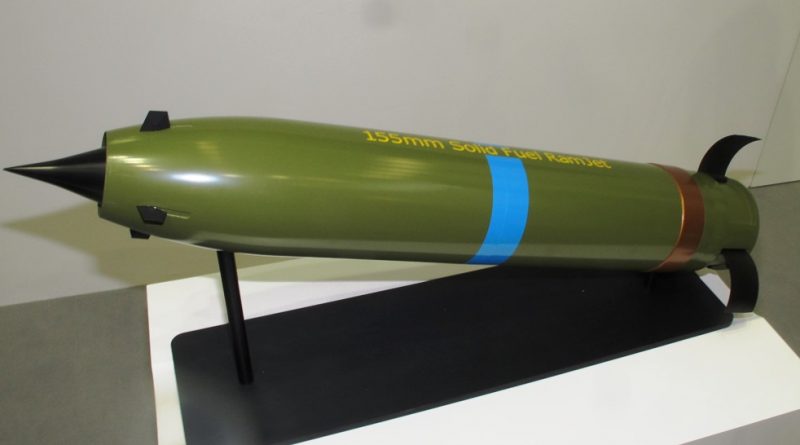IIT Madras to showcase revolutionary ramjet-powered artillery shell concept at DefExpo2020
SOURCE: RAUNAK KUNDE / NEWS BEAT / IDRW.ORG

Nammo ramjet artillery
IIT Madras will unveil a potentially revolutionary concept of a 155mm ramjet-powered pseudo-missile shell that can fire at targets more than 70-80km away at the DefExpo2020 to attract eyeballs of the Ministry of Defense (MOD) officials for funding the program to develop. Norway’s Nammo in 2018 has showcased 155mm Solid Fuel Ramjet projectile which will go in production between 2023 and 2024.
Lt. Gen. Palepu Ravi Shankar, Director General of Artillery (Retd.) who has joined Department of Aerospace engineering at IIT Madras in his tweet on popular micro-blogging site Twitter has revealed that “We have a solid concept to develop a ramjet-powered shell if Government parts with funds to move ahead with the program”.
Ranesh Rajan Defence Analysts close to idrw.org explained that ” Ramjet-powered artillery shell is like launching a missile from a cannon which will travel at three times the speed of sound powered by ramjet motor and allow the projectile to hit a moving targets at long ranges”.
The advantage of the revolutionary ramjet-powered artillery shell will mean ramjet rounds would exponentially increase the possible target area to more than 31079 square Kilometers without the howitzers ever having to relocate and ground forces could operate far further from those elements while still having vital artillery support on call.
Indian Army is already procuring M982 Excalibur extended-range guided artillery shells which have a range of 40km for its newly acquired M777 155 mm 39-caliber towed howitzer guns and the K-9 Vajra 155 mm/52 caliber self-propelled tracked howitzer. India’s Advanced Towed Artillery Gun System (ATAGS) already has demonstrated a mind-boggling range of 47 km using high-explosive base bleed (HEBB) projectiles at Pokhran and range of 58km was achieved at high-altitude winter trials in the Himalayan Sikkim region in north-eastern India.
NOTE : Article cannot be reproduced without written permission of idrw.org in any form even for YouTube Videos to avoid Copy right strikes
from Indian Defence Research Wing https://ift.tt/2Oa5QyB
via IFTTThttp://idrw.org
No comments:
Post a Comment